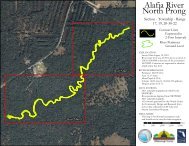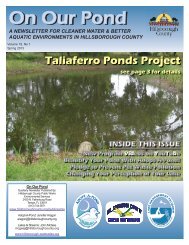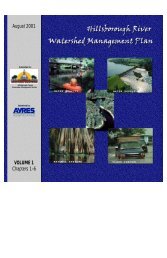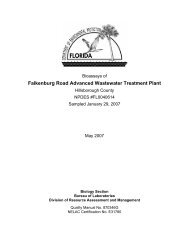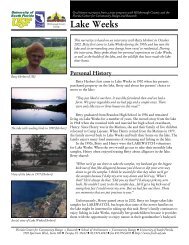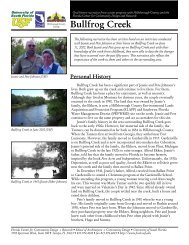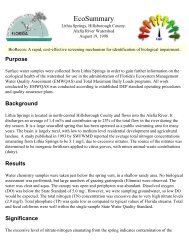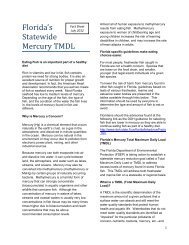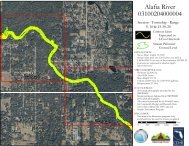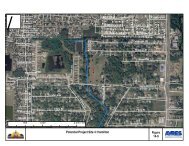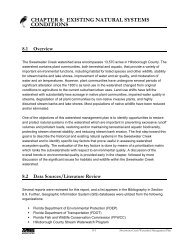Rocky Brushy Creek Watershed Mgmt. Plan (2007) -- Part 2
Rocky Brushy Creek Watershed Mgmt. Plan (2007) -- Part 2
Rocky Brushy Creek Watershed Mgmt. Plan (2007) -- Part 2
You also want an ePaper? Increase the reach of your titles
YUMPU automatically turns print PDFs into web optimized ePapers that Google loves.
EXISTING NATURAL SYSTEMS CONDITIONS8.4 Historical and Existing HabitatsThis section discusses, in broad terms, thehistorical (pre-1900) natural systems conditionsin general terms based on information derivedfrom the General Land Office Survey Notes. Thisdescription is presented as background fordetailed discussion of the land use patterns andnatural systems areal coverages existing in the1950’s and currently (2004). Information on the1950’s and 2004 land uses were obtained fromSWFWMD. The following tables have collapsedthe Level III FLUCFCS (2004) land use codes toLevel I to enhance comparisons among the pre-1900, 1950’s, and 2004 time periods. Thefigures illustrating land uses retain the Level III coding. The narratives following the tables providedetails of the Level III land use cover types included in the Level I listings in the tables.Historical (pre-1900) land uses and cover types – Prior to the permanent settlement ofHillsborough County in the first half of the 19 th century, approximately 70% of the land in the <strong>Rocky</strong><strong>Creek</strong> - <strong>Brushy</strong> <strong>Creek</strong> watershed was occupied by soils that supported two land cover types: pineflatwoods (FLUCFCS 411) and longleaf pine-xeric oak (FLUCFCS 412). The remainder of the landin the watershed was occupied by cypress swamps (FLUCFCS 621), stream and lake swamp(FLUCFCS 615), bay swamps (FLUCFCS 611), wetland forested mixed (FLUCFCS 630), lakes(FLUCFCS 520), freshwater marshes and wet prairies (FLUCFCS 641 and 643), saltwatermarshes (FLUCFCS 642), tidal flats/submerged shallow platform (FLUCFCS 651, and Mangroveswamps (FLUCFCS 612). The swamps bordering the channels, the large areas of cypress swamp,and the saltwater marshes adjacent to the channel in the lower reaches of <strong>Rocky</strong> <strong>Creek</strong> weresignificant contiguous wetlands in the watershed. By 1910, Hillsborough was the most populouscounty in the state, and considerable development of roads and railroads had occurred. By 1916,in the <strong>Rocky</strong> <strong>Creek</strong> - <strong>Brushy</strong> <strong>Creek</strong> watershed, major roadways (Old Memorial Highway, Van DykeRoad, Lutz-Lake Fern Road, US 41) were hard surface facilities, and numerous secondary roadswere in place. Over 200 homes and buildings had been constructed, and the Tampa and GulfCoast Railroad had several lines through the watershed. Several small communities and villages(Stemper, Citrus Park, Tarpon Junction, Blockton, Lutz, Cosme) had grown up around roadwayintersections and rail lines. By 1938, agriculture had become well established on the uplands(longleaf pine-xeric oak, pine flatwoods) in the central and northern regions of the watershed.Cattle, row crops, and citrus were the dominant commodities. By 1950, agriculture accounted for19.5% of the lands in the watershed, while uplands were reduced to 51% of the watershed. By2004, the percent coverage of the watershed by native uplands was further reduced to 5.4%.8-4<strong>Rocky</strong>/<strong>Brushy</strong> <strong>Creek</strong> <strong>Watershed</strong> Management <strong>Plan</strong>



